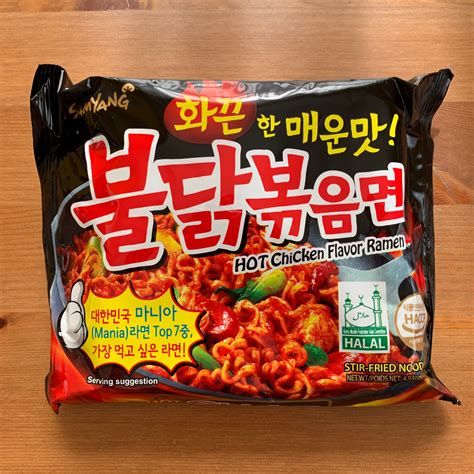Denmark’s decision to recall a popular brand of extremely spicy Korean ramen has ignited a fiery debate, both figuratively and literally, across the internet. The noodles, known for their intense heat, have been deemed too dangerous for public consumption, a stance that has led to polarized opinions. Is this a prudent safety measure, or is it an overreach of regulatory authority? As much as we’d like to take a one-size-fits-all approach to food safety, the reality is far more nuanced.
Several users on social media echo a sentiment that recalls seem extreme, but acknowledge that these noodles are incredibly spicy. One commenter humorously noted that these noodles could give nuclear fuel a run for its money. On the other hand, the term ‘poison’ used in some reports has caused confusion and backlash. It’s crucial to note that the primary issue isn’t that the noodles are literal poison, but that they can cause ‘poisoning injuries’. This has apparently happened in Germany, leading to hospitalization of children—a detail revealed in further inspection of the issue.
For those unfamiliar with Scoville heat units (SHU), it’s a scale that measures the spiciness of a substance. The recalled noodles clock in at around 8,800 SHU, equating to a handleable, yet intense, spice level. To provide a comparison, common hot sauces like Tabasco register around 5,000 SHU. The seemingly innocuous capsaicin, responsible for that spicy kick, activates pain receptors but is generally harmless unless consumed in extreme quantities. Comments have debated whether the intensity warrants a recall, especially when less-spicy products have caused significant harm due to viral ‘challenges’ popular among youth.
The Scoville Scale can be a tricky metric to navigate. One user pointed out that while El Yucateco sauce has a similar SHU to the recalled noodles, the latter felt far spicier possibly due to volume and concentration changes post-cooking. The sauce’s intensity is diluted when mixed with other food, while the ramen broth retains its spice, making every bite a steep challenge. The differences in handling and consumption patterns ought to be considered before reaching a conclusion on its relative safety.
Cultural perceptions of spice play a significant role in these debates. For some, the noodles are a delicious treat, barely registering as spicy, while for others they’re simply unbearable. Capsaicin tolerance varies significantly across the globe, often shaped by dietary habits started in childhood. For instance, many in Southeast Asia and Mexico have diets that include daily high spice levels, while Scandinavian palettes are generally milder. This geographical divergence affects regulatory standards and public reactions.
The Danish recall might have unwittingly conjured a ‘forbidden fruit’ phenomenon. Similar to the ‘parental advisory’ stickers on music albums, banning these noodles could potentially heighten their allure among spice enthusiasts in Denmark and beyond. There’s an irony in the potential demand spike fueled by the very regulation meant to curb it. As some commenters noted, the boom in the ramen’s popularity due to being ‘BANNED IN DENMARK’ could have a paradoxical effect, expanding their market reach.
Ultimately, the case of Denmark’s recall introduces a broader, rich conversation about the acceptable levels of spiciness in food products and the responsibilities that manufacturers and governments bear. Should we legislate based on outlier cases, or should there be a more nuanced, tiered warning system? Perhaps a middle ground could be struck by placing explicit warning labels rather than outright banning? This approach would better respect consumer autonomy while ensuring public safety.
Determining the balance between caution and overreach, especially in matters of culinary preferences and cultural norms, is no easy task. However, the discourse surrounding Denmark’s decision underscores a need for a more holistic way to deal with such scenarios. Engaging diverse perspectives in regulatory discussions can help create balanced solutions that respect cultural food traditions while safeguarding public health.


Leave a Reply